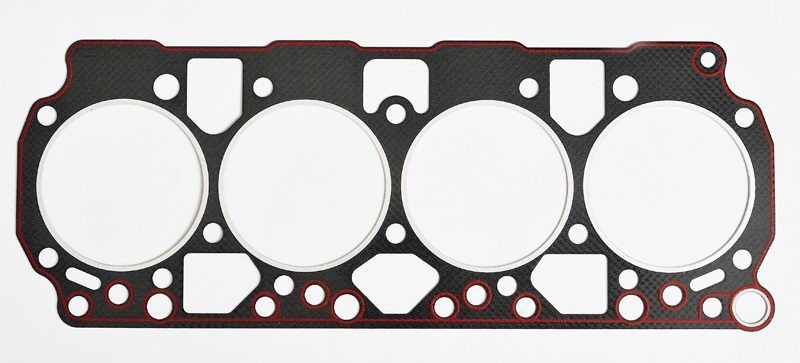
All about the cylinder head gasket in the car
Content
To make the motor easy to repair, and in general it was possible to assemble all the parts into a single unit, the engine is made of several parts. Its device includes a cylinder block, a cylinder head and a valve cover. A pallet is installed at the bottom of the motor.
When the parts are interconnected (inside some, various kinds of pressure are formed), a cushioning material is installed between them. This element ensures tightness, preventing leakage of the working medium - be it air or liquid.
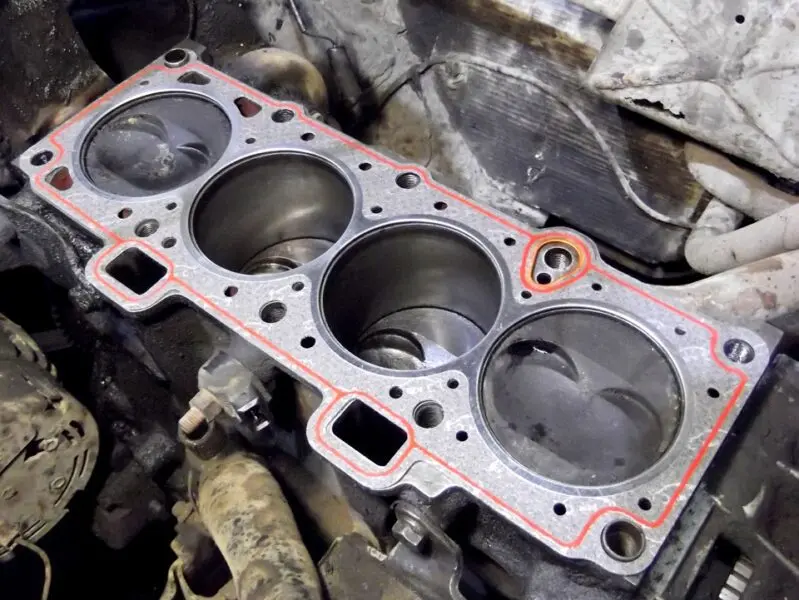
One of the engine breakdowns is the burnout of the gasket between the block and the head. Why does this malfunction occur and how to fix it? Let's deal with these and related issues.
What is a cylinder head gasket in a car?
Many technical holes are made in the motor housing (through them oil is supplied for lubrication or it is removed after processing all the mechanisms back to the sump), including the cylinders themselves. A head is put on top of it. Holes for valves are made in it, as well as fasteners for the gas distribution mechanism. The structure is closed from above with a valve cover.
The cylinder head gasket is located between the block and the head. All the necessary holes are made in it: technical, for fastening and for cylinders. The size and quantity of these elements depends on the modification of the motor. There are also holes for the circulation of antifreeze along the motor jacket, which provides cooling of the internal combustion engine.
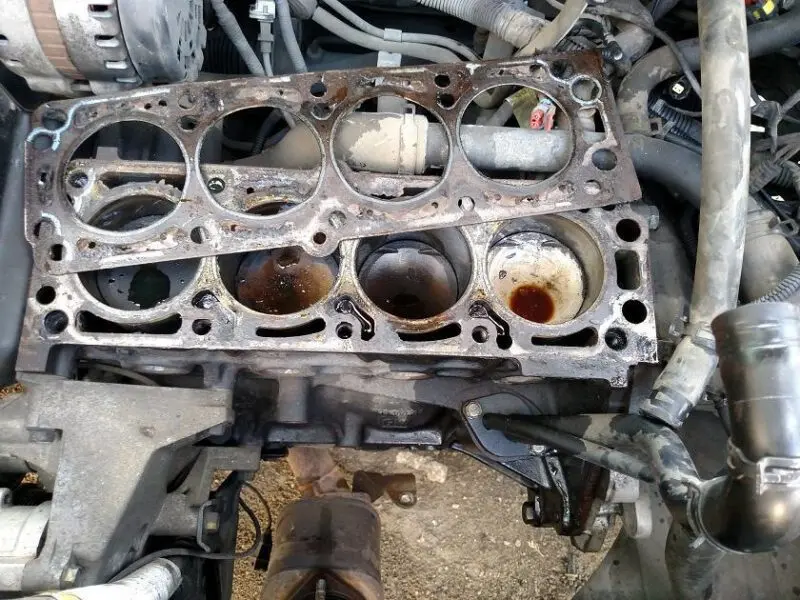
The gaskets are made of paronite or metal. But there are also asbestos counterparts or elastic polymer. Some motorists use a heat-resistant silicone sealant instead of a gasket, but this is not recommended, since the excess substance after assembling the motor can only be removed from the outside. If the silicone partially blocks a hole (and this is extremely difficult to exclude), then this can adversely affect the operation of the engine.
This part can be easily found at any auto parts store. Its cost is low, but the work on its replacement will cost the owner of the car a rather large amount. Of course, this also depends on the engine model.
The high cost of work is due to the fact that the replacement of the gasket can be performed only after disassembling the unit. After assembly, you need to adjust the timing and set its phases.
Here are the main functions of the cylinder head gasket:
- Keeps the gas formed after the ignition of the VTS from leaving the motor housing. Due to this, the cylinder maintains compression when the mixture of fuel and air is compressed or expands after ignition;
- Prevents engine oil from entering the antifreeze cavity;
- Prevents leakage of engine oil or antifreeze.
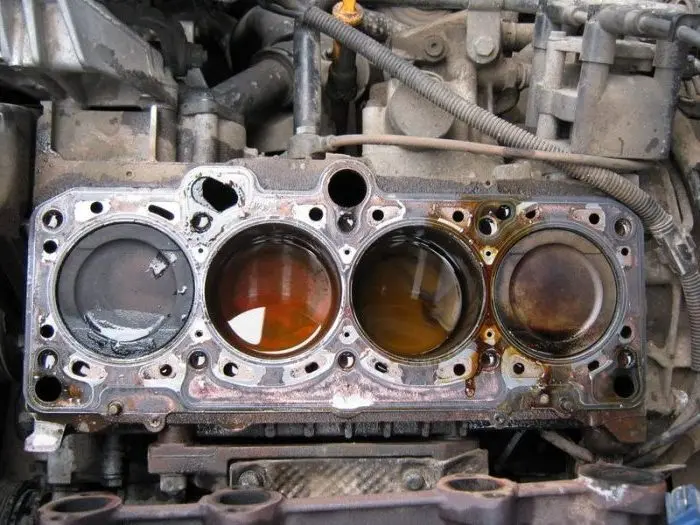
This item belongs to the category of consumables, as over time it becomes unusable. Since a lot of pressure is created in the cylinders, the worn out material can pierce, or burn out. This should not be allowed, and if this happened, it is necessary to replace the part as soon as possible. If you ignore the need for repairs, you can ruin the internal combustion engine.
How to understand that the cylinder head gasket is broken?
You do not need to carry out complex diagnostics to recognize the burnout of the gasket. This is indicated by a specific sign (and sometimes there are several of them), which corresponds to this particular breakdown. But first, let's consider why the spacers deteriorate.
Causes of breakage
The very first reason for premature material wear is errors during assembly of the unit. In some areas, the walls of the cushioning material are thin, which makes it easy to tear. The quality of the product is an equally important factor in determining the frequency of its replacement.
The main enemy of the head gasket material is dirt. For this reason, during replacement, it is very important to ensure that no foreign objects (even grains of sand) get between the block and the head. Also an important factor is the quality of the connecting surfaces. Neither the end face of the block nor the head should have a defect in the form of chips or roughness.

Another reason for the rapid burnout of the gasket is incorrect fixing of the cylinder head. The fastening bolt must be tightened to a certain extent and all fasteners must be installed in sequence. In what sequence, and with what effort the bolts should be tightened, the manufacturer informs in the technical literature for the car or the instructions for the repair kit in which the gasket is located.
Sometimes overheating of the motor leads to the fact that the gasket plane is deformed. Because of this, the material will burn out faster and one of the following signs will appear.
Signs of a punched cylinder head gasket
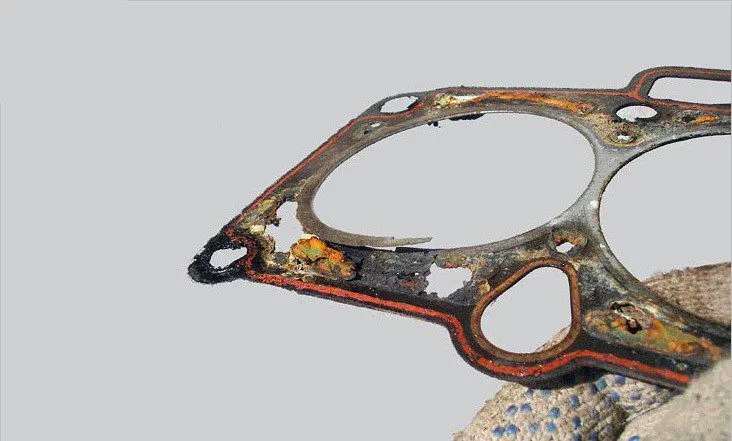
One of the most famous symptoms is loud bangs from a particular cylinder (or several) during engine operation. Here are a few more signs that indicate a problem with the cushioning material:
- Engine structure This can happen (if the fuel and ignition systems are in good working order) when a gap has formed between the cylinders. This malfunction is diagnosed by measuring the compression. However, low pressure and triple action are also symptoms of a more serious motor “disease”. The reasons for triplet are told here, and the pressure measurements were discussed here;
- Much less often - the appearance of exhaust gases in the cooling system. In this case, a burnout occurred in the area where the jacket cooling line passes;
- Overheating of the motor. This happens if the cylinder seal edges burn out. Because of this, the exhaust gases heat up the coolant too much, which leads to the worst heat dissipation from the cylinder walls;
- Oil in the cooling system. In the first case, the car owner will notice grease spots in the expansion tank (their size depends on the degree of burnout).
 In the second, an emulsion will form in the oil. It is easy to see if you take out the dipstick after running the motor. White foam will be visible on its surface;
In the second, an emulsion will form in the oil. It is easy to see if you take out the dipstick after running the motor. White foam will be visible on its surface; - Burnout between the cylinders can manifest itself as a difficult cold start of the power unit, but after warming up, its stability returns;
- The appearance of oil drips at the junction of the block and the head;
- Thick and white exhaust and stable antifreeze reduction without external leaks.
What to do if the cylinder head gasket is broken
In this case, the only solution to the problem is to replace the burned-out element with a new one. The cost of a new cushioning material depends on the manufacturer and the features of the product, but on average, the owner of a car will cost about three dollars. Although the range of prices is from $ 3 to $ 40.
However, most of all funds will be spent on doing the work, as well as on other consumables. So, when the fastening bolt is unscrewed, it can no longer be used a second time - just change it to a new one. The cost of the set is about $ 10 more.
Next, you need to check the quality of the end surface of the head and block. If necessary (and this often happens), these surfaces are sanded. To pay for this work, it will also take about ten dollars, and the gasket will already need to buy a repair one (the grinding layer is taken into account). And that has already spent about $ 25 (at budget rates), but really nothing has been done yet.

Depending on the design features of the motor, removing the head may be accompanied by additional dismantling work. In order to prevent an irreparable mistake and not to spoil expensive equipment, it must be entrusted to a specialist. Depending on the region, the entire process will take about $ 50 in addition to the cost of consumables.
After replacing the cushioning material, you should drive for some time, looking closely at the operation of the internal combustion engine. If there are no signs of a burnt-out gasket, then the money is well spent.
How to change the cylinder head gasket correctly
The scheme for dismantling the old gasket can be different, since there are many modifications of the motors. On some models, most parts or attachments must be removed first. The position of the timing camshaft should also be noted before removing the drive belt.
The dismantling of the head itself must also be carried out according to a certain scheme. So, the fastening bolts should be loosened in turn, and only then completely unscrewed. By such actions, the master ensures uniform stress relief.
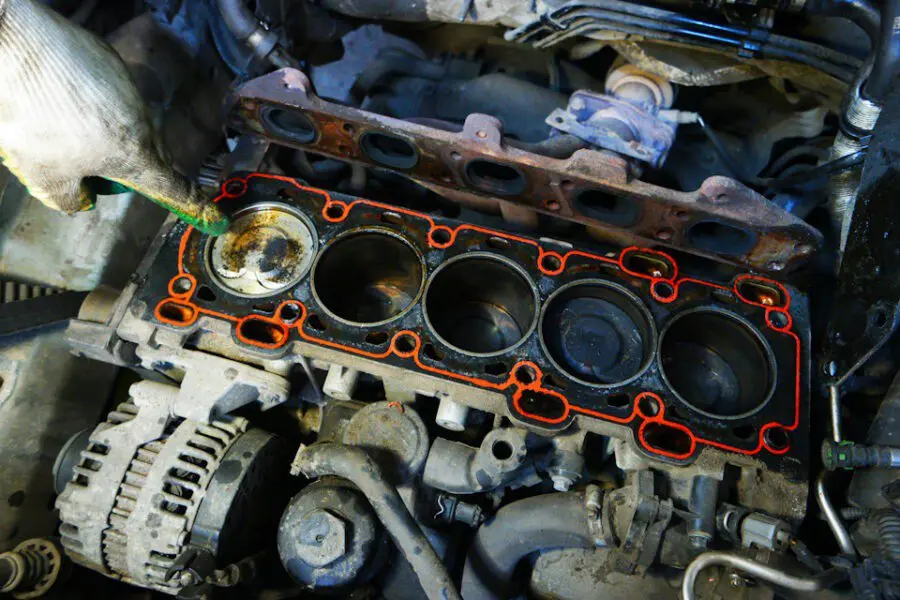
Sometimes an old hairpin breaks during dismantling. To unscrew it, you can take a small tube with a smaller diameter and weld it to the stuck part of the bolt in the block. For convenience, you can weld a nut to the end of the tube. Next, the key is removed the remaining piece of the retainer.
The surfaces of the elements to be joined are carefully cleaned from the remnants of old material. Next, it is checked whether there are any defects at the installation site of the new gasket, new pins are screwed in, a new gasket is installed, the block head is put on the pins and the cover is put on. The fasteners must be tightened exclusively with a torque wrench, exclusively according to the scheme provided by the manufacturer.
A little about the consequences of a wrong job:
Do I need to stretch the cylinder head after replacing the gasket
Previously, auto mechanics recommended stretching (or clamping the cylinder head harder) after 1000 kilometers. In the case of modern material, the need for such a procedure is excluded.
Volumes of service literature indicate the need to adjust the valves and check the condition of the timing belt, but checking the tightening torque is not reported.
If an imported gasket with applied sealant is used, and a common wrench tightening scheme is used (2 * 5 * 9, and the last moment is brought to 90 degrees), then additional tightening of the bolts is not required.
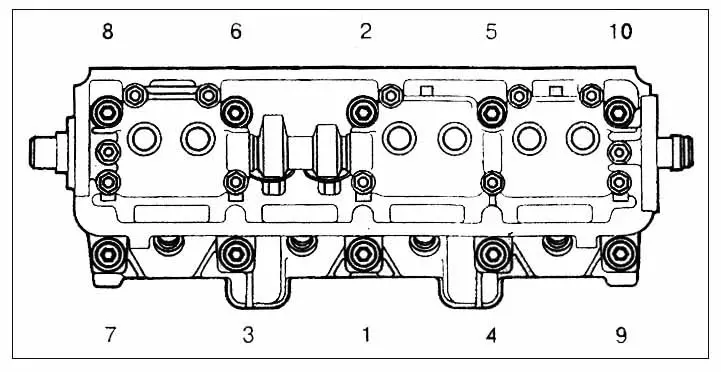

There is another scheme: first, all the studs are pulled with an effort of 2 kg, then all - by 8 kg. Next, the torque wrench is set to a force of 11,5 kilograms and pulled up 90 degrees. At the end - you need to add a force of 12,5 and the angle of rotation - 90 g.
Metal or paronite cylinder head gasket: which is better
In conclusion, a little about two types of gaskets: paronite or metal. The key factor on which the choice depends is the recommendations of the car manufacturer. If the manufacturer specifies that a metallic material is to be used, this cannot be ignored. The same applies to the paronite analogue.
Some of the features of both gasket options are:
| Material: | For which engine: | Features: |
| Metal | Turbocharged or forced | It has special strength; Disadvantage - it needs a particularly accurate installation. Even if it moves a little, burnout is ensured almost immediately after installation. |
| Paramite | Normal not forced and atmospheric | A more flexible material compared to a metal analogue, therefore it adheres more tightly to surfaces; Disadvantage - at high temperatures (overheating of the engine or use in a turbocharged unit) it quickly deforms. |
If the gasket was installed incorrectly, then it will become known immediately - as soon as the engine starts, it will either burn out, or the pistons will cling to the metal seal. In some cases, the ICE will not start at all.
Questions and answers:
How to understand that you need to change the cylinder head gasket? Exhaust gases come out from under the cylinder head, shoots between the cylinders, the exhaust enters the coolant, antifreeze appears in the cylinder or oil in antifreeze, the internal combustion engine heats up quickly.
Is it possible to drive a car with a punctured cylinder head gasket? If the oil is mixed with coolant, then in no case should it. If the coolant flies into the pipe, then subsequently you will have to change rings, caps, etc. due to their heavy wear and tear.
What is the cylinder head gasket for? It prevents oil from entering the cooling jacket and coolant into the oil passages. It also seals the connection between the cylinder head and the block so that the exhaust gases are diverted into the pipe.

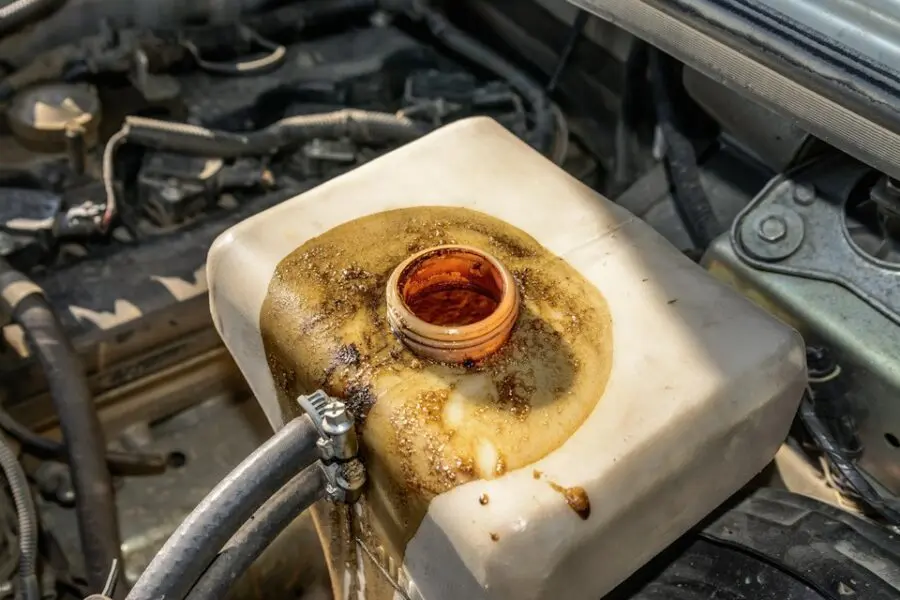 In the second, an emulsion will form in the oil. It is easy to see if you take out the dipstick after running the motor. White foam will be visible on its surface;
In the second, an emulsion will form in the oil. It is easy to see if you take out the dipstick after running the motor. White foam will be visible on its surface;